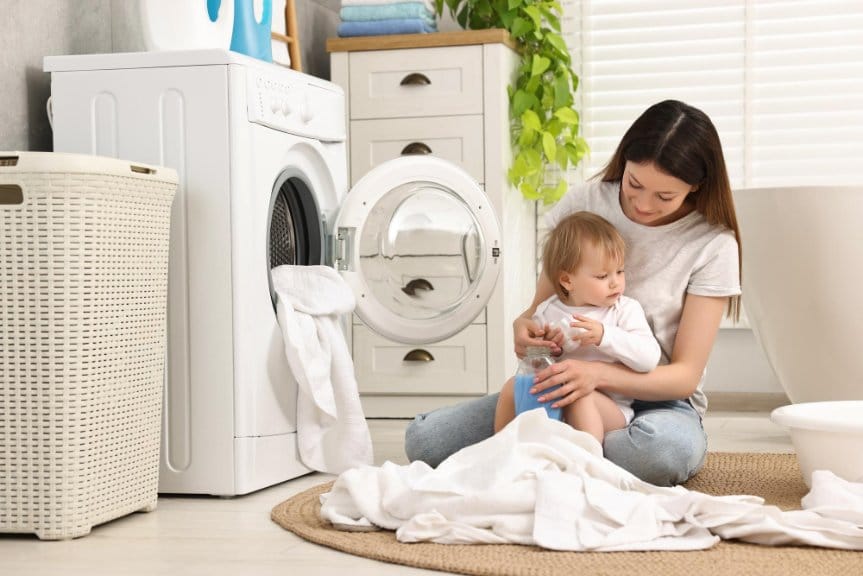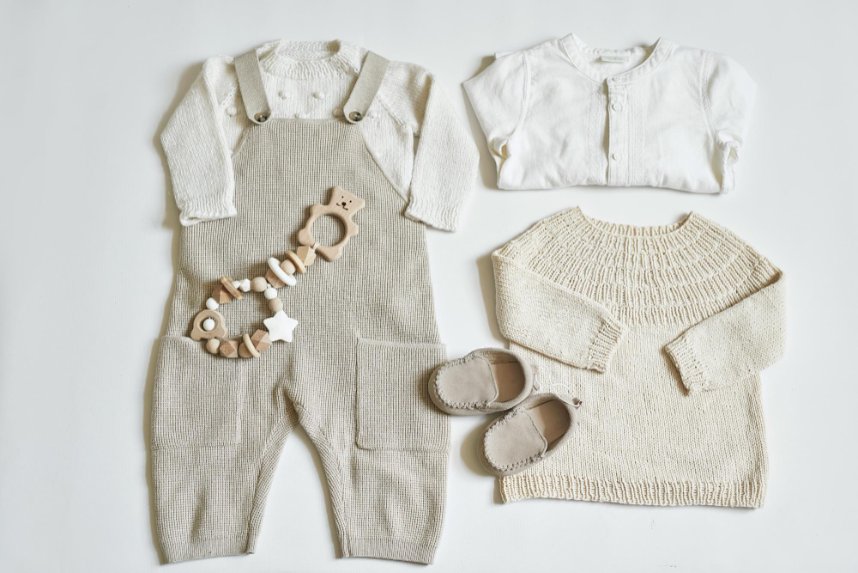A comprehensive guide to dryer sheet safety for infant clothing, backed by pediatric dermatologist recommendations and the latest research
Quick Answer
Baby clothes should not use dryer sheets. Pediatric dermatologists and the American Academy of Dermatology recommend avoiding dryer sheets on infant clothing due to chemical residues that can irritate sensitive baby skin and compromise flame-retardant properties in sleepwear.
Table of Contents
Understanding Dryer Sheets and Baby Skin
When caring for your newborn, every detail matters. Baby skin is fundamentally different from adult skin. It’s significantly thinner, more permeable, and lacks the protective barrier that develops over time. This makes infants particularly vulnerable to chemical irritants found in common household products, including dryer sheets.
“Delicate baby skin is more susceptible to allergens or irritants. Newborn skin is sensitive and less resistant to irritants compared to adult skin.” – Dr. Kellie Reed, Board-Certified Dermatologist
How Dryer Sheets Work
Dryer sheets are typically made from nonwoven polyester material coated with fabric softening chemicals, fragrances, and anti-static agents. When heated in the dryer, these chemicals transfer to your clothing, creating a thin film that reduces static and adds fragrance. However, this same film can cause problems for babies.
Chemical Composition Concerns
Research has identified over 25 volatile organic compounds (VOCs) emitted from dryer vents when using scented dryer sheets, including:
- Acetaldehyde – Classified as a carcinogenic hazardous air pollutant
- Benzene – Known carcinogen
- Quaternary ammonium compounds – Linked to asthma triggers
- Formaldehyde – Respiratory irritant and potential carcinogen
- Synthetic fragrances – Can contain hormone-disrupting phthalates
Why Baby Skin Reacts Differently
Baby skin absorbs substances up to five times faster than adult skin. The stratum corneum (protective outer layer) is thinner and less developed, making chemical penetration easier. Additionally, babies have a higher surface area to body weight ratio, meaning exposure to any chemical is proportionally greater.
Health Risks and Chemical Concerns
Immediate Skin Reactions
The most common immediate effects of dryer sheet exposure in babies include:
| Reaction Type | Symptoms | Onset Time |
|---|---|---|
| Contact Dermatitis | Red, itchy rash at contact points | 2-48 hours |
| Allergic Reaction | Hives, swelling, widespread rash | Minutes to hours |
| Eczema Flare | Dry, scaly, inflamed patches | Hours to days |
| Respiratory Issues | Wheezing, coughing, difficulty breathing | Minutes to hours |
Flame Retardant Concerns
One of the most serious safety concerns involves flame-retardant baby sleepwear. Dryer sheet residues can coat fabric fibers and reduce the effectiveness of fire-resistant treatments, potentially compromising your baby’s safety.
Safety Alert: Flame Retardant Properties
The Consumer Product Safety Commission requires that baby sleepwear be either tight-fitting or flame resistant. Using dryer sheets can interfere with these safety features by creating a coating that makes fabrics more flammable.
Long-term Health Considerations
While immediate reactions are concerning, long-term exposure to dryer sheet chemicals may contribute to:
- Development of chronic skin conditions
- Increased sensitivity to other chemicals
- Potential respiratory sensitivities
- Disruption of natural skin barrier development
Age-Specific Guidelines for Baby Laundry
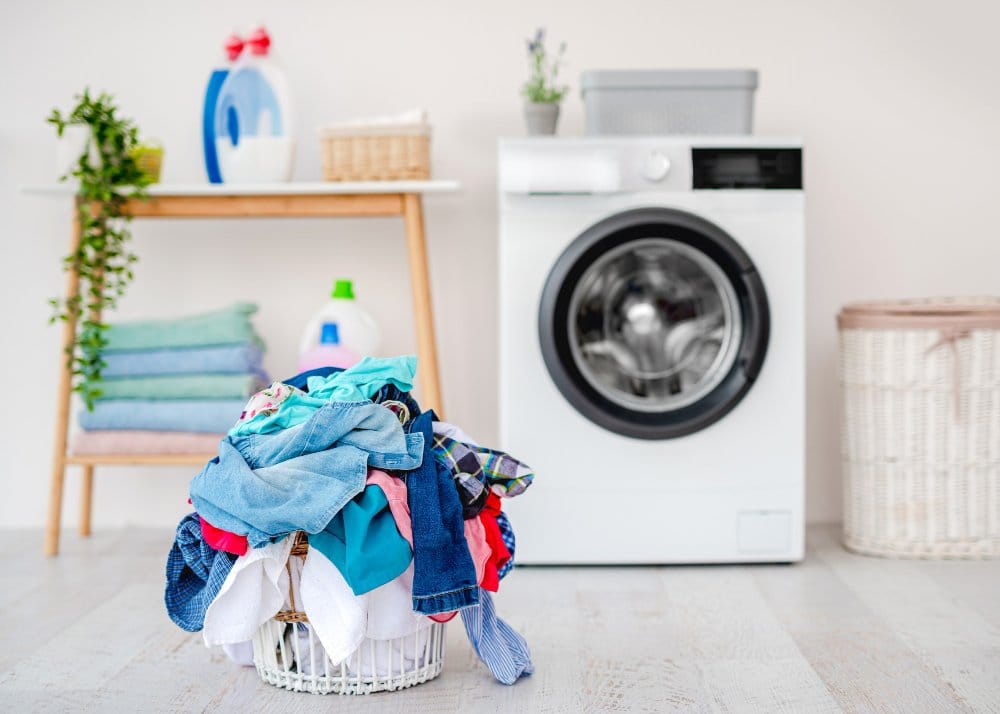
Strict Avoidance: No dryer sheets, fabric softeners, or scented products. Use only fragrance-free, hypoallergenic detergents.
Continued Caution: Continue avoiding dryer sheets. Consider natural alternatives like wool dryer balls for static control.
Gradual Introduction: May consider “free and clear” products if no skin sensitivities present, but natural alternatives remain safest.
Individual Assessment: Decision based on child’s skin sensitivity and any diagnosed conditions like eczema or asthma.
When Can I Use Dryer Sheets with Baby Clothes?
Most pediatric dermatologists recommend waiting until at least age 2-3 before considering any fabric softening products, and only then if your child shows no signs of skin sensitivity. Even then, choose products specifically labeled as safe for sensitive skin.
Safe Alternatives to Dryer Sheets
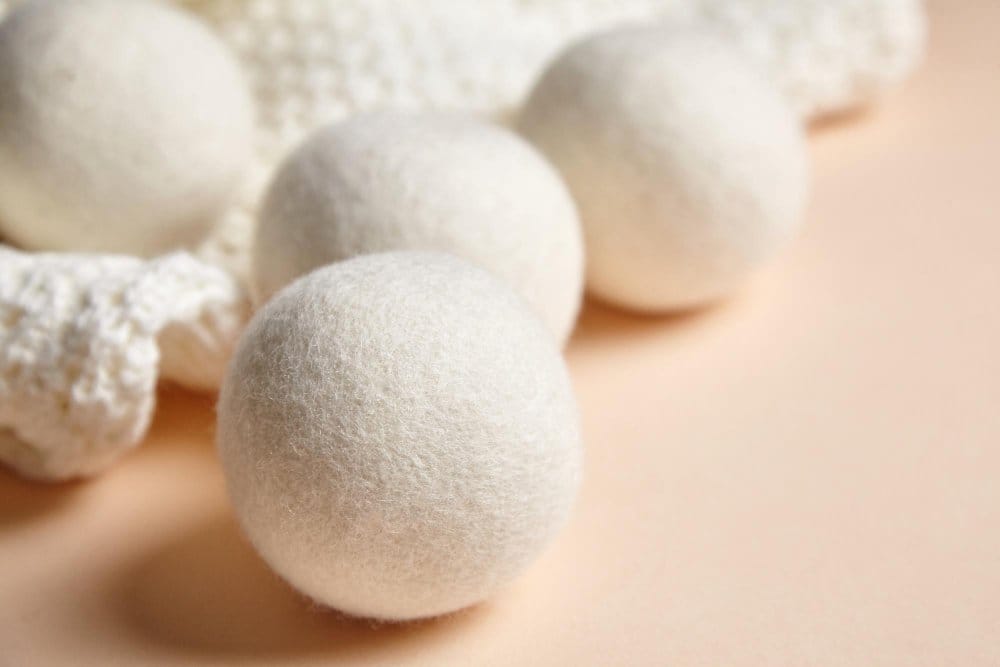
Wool Dryer Balls: The Top Choice
Wool dryer balls are the most recommended alternative by pediatric dermatologists. Made from 100% natural wool, they provide multiple benefits:
Wool Dryer Balls
✓ Chemical-free
✓ Reusable (1000+ loads)
✓ Reduces drying time
✓ Natural static control
Free & Clear Dryer Sheets
? May still contain softeners
? Single-use waste
✓ Less fragrance
✗ Not always flame-safe
Regular Dryer Sheets
✗ Contains chemicals
✗ Synthetic fragrances
✗ Static coating film
✗ Reduces flame resistance
Other Natural Alternatives
White Vinegar Method
Add 1/4 to 1/2 cup of white distilled vinegar to your washing machine’s fabric softener compartment during the rinse cycle. This natural acid:
- Softens fabrics naturally
- Removes soap residue
- Reduces static cling
- Eliminates odors without leaving vinegar scent
Baking Soda Addition
Add 2-4 tablespoons of baking soda to the wash cycle (not the dryer) to:
- Naturally soften water
- Boost detergent effectiveness
- Neutralize odors
- Keep fabrics soft
Air Drying Benefits
Consider air drying baby clothes when possible. It:
- Eliminates static naturally
- Preserves fabric integrity
- Saves energy
- Reduces chemical exposure to zero
Proper Baby Clothes Washing Techniques
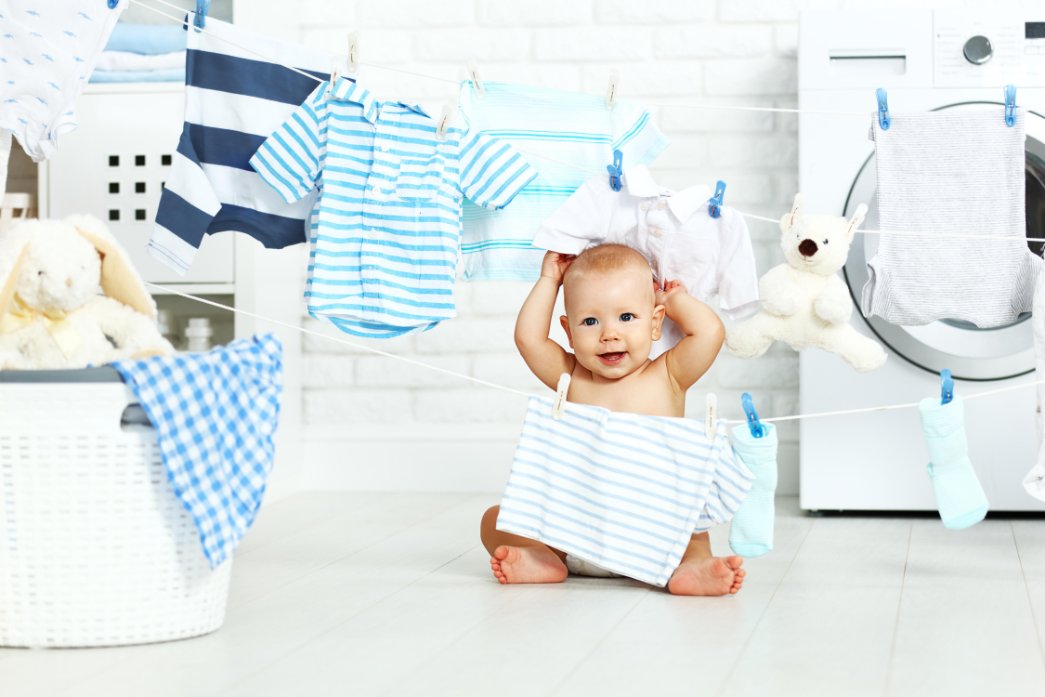
Pre-Washing New Baby Clothes
Always wash baby clothes before first use. This removes manufacturing chemicals, sizing, and potential contaminants from the production process.
Choosing Baby-Safe Detergents
Board-certified pediatric dermatologist Dr. Sheilagh Maguiness recommends looking for detergents that are:
- Fragrance-free: Avoids synthetic scent chemicals
- Dye-free: Eliminates artificial colorants
- Plant-based: Uses natural cleaning ingredients
- Hypoallergenic: Formulated for sensitive skin
Water Temperature Guidelines
For most baby clothes, wash in cold or warm water (not hot) to:
- Preserve fabric integrity
- Prevent shrinkage
- Maintain flame-retardant properties
- Save energy
How Often Should You Wash Baby Clothes?
Baby clothes typically need more frequent washing than adult clothing:
| Item Type | Washing Frequency | Reason |
|---|---|---|
| Onesies/Bodysuits | After each wear | Direct skin contact, frequent soiling |
| Sleepwear | After 2-3 wears | Extended wear time, sweat absorption |
| Outerwear | As needed | Less direct contact, visual assessment |
| Blankets | Weekly | Regular use, potential for spit-up |
Special Laundry Situations
Cloth Diapers and Dryer Sheets
Cloth diapers require special attention. Dryer sheets create a waxy coating that:
- Reduces absorbency significantly
- Causes repelling (liquids roll off instead of absorbing)
- Leads to leaks and diaper rash
- Requires stripping treatments to remove buildup
Cloth Diaper Warning
Never use dryer sheets, fabric softeners, or products containing oils with cloth diapers. This can permanently damage their absorbency and void warranties.
Dealing with Static Without Dryer Sheets
Static cling is often caused by over-drying. To control static naturally:
- Remove clothes while slightly damp
- Use wool dryer balls (2-3 per load)
- Ensure proper humidity in laundry area
- Separate synthetic and natural fabrics
- Add aluminum foil balls to dryer (controversial but some swear by it)
Stain Removal for Baby Clothes
Common baby stains require specific treatments:
| Stain Type | Treatment Method | Baby-Safe Products |
|---|---|---|
| Formula/Milk | Rinse in cold water, pre-treat with enzyme detergent | Baby-specific enzyme cleaners |
| Baby Food | Scrape excess, treat with natural enzyme cleaner | Diluted baby detergent |
| Diaper Blowouts | Rinse immediately, use oxygen bleach if needed | Baby-safe oxygen bleach |
| Spit-up | Blot (don’t rub), rinse with cold water | Plain water often sufficient |
Can You Tumble Dry Baby Muslins?
Baby muslins can be tumble dried, but special care is needed:
- Use low heat settings only
- Remove while slightly damp to prevent over-drying
- Use wool dryer balls to maintain softness
- Air drying preserves the fabric’s natural texture
Product Recommendations
Best Baby Laundry Detergents
Based on pediatric dermatologist recommendations and safety testing:
| Brand | Key Features | EWG Rating | Best For |
|---|---|---|---|
| Seventh Generation Free & Clear | Plant-based, fragrance-free, concentrated | A | General use, sensitive skin |
| Babyganics 2X | Dermatologist-tested, sulfate-free, enzyme cleaners | B+ | Tough stains, very sensitive skin |
| Puracy Natural | Plant-derived, hypoallergenic, biodegradable | A- | Eco-conscious families |
| Honest Company Free & Clear | Organic, fragrance-free, hypoallergenic | B+ | Organic preferences |
Recommended Wool Dryer Ball Brands
- Smart Sheep: 100% New Zealand wool, highly rated
- Friendsheep: Organic, colorful options available
- Woolzies: Extra-large size, long-lasting
- Patagonia: Sustainably sourced, premium quality
What’s the Best Fabric Softener for Babies?
The honest answer is that babies don’t need fabric softener. The safest approach is to avoid all commercial fabric softeners and use natural alternatives. If you must use something, look for:
- Plant-based formulations
- No synthetic fragrances
- Hypoallergenic certifications
- Pediatric dermatologist approval
Troubleshooting Common Issues
Signs Your Baby May Be Reacting to Dryer Sheets
Watch for these warning signs that may indicate chemical sensitivity:
When to Contact Your Pediatrician
- Persistent rash that doesn’t improve after removing dryer sheets
- Respiratory symptoms (wheezing, coughing)
- Worsening eczema or other skin conditions
- Changes in sleep patterns due to skin discomfort
- Any signs of allergic reaction (hives, swelling)
Removing Chemical Buildup from Existing Clothes
If you’ve been using dryer sheets and want to switch, you may need to remove existing buildup:
- Strip wash: Wash with just hot water (no detergent) to remove residues
- Vinegar rinse: Add 1 cup white vinegar to rinse cycle
- Double rinse: Run an extra rinse cycle
- Air dry: Skip the dryer for the first wash after stripping
Transitioning Your Family
Making the switch from dryer sheets can be gradual:
- Start with baby clothes only
- Try wool dryer balls for a few weeks
- Notice the difference in static and softness
- Gradually expand to all family laundry
- Calculate cost savings over time
Frequently Asked Questions
Conclusion
Key Takeaways for Parents
- Avoid dryer sheets entirely for baby clothes due to chemical risks and safety concerns
- Choose natural alternatives like wool dryer balls or air drying for safer laundry care
- Use fragrance-free, hypoallergenic detergents recommended by pediatric dermatologists
- Wash new baby clothes before first use to remove manufacturing chemicals
- Watch for skin reactions and consult your pediatrician if concerns arise
- Consider flame-retardant safety when choosing laundry products for sleepwear
The evidence is clear: dryer sheets pose unnecessary risks to baby health and safety. Pediatric dermatologists, the American Academy of Dermatology, and leading baby care experts all recommend avoiding these products for infant clothing. The combination of chemical exposure risks, potential skin irritation, and compromise of flame-retardant properties makes dryer sheets an unacceptable choice for baby laundry.
Fortunately, effective alternatives exist that are safer, often more economical, and environmentally friendly. Wool dryer balls provide excellent static control and fabric softening without any chemical residues. Natural methods like white vinegar and baking soda offer additional options for parents seeking chemical-free laundry care.
“For myself as a mom to two children and a pediatric dermatologist, it’s a balance between safe for the skin and safe for the environment. In general, newer options and formulations such as strip-based or powder-based detergents are great because they have less carbon footprint and are better overall for the environment.” – Dr. Sheilagh Maguiness, MD, FAAD
Remember that your baby’s skin will develop and become less sensitive over time. What matters most in these early months is providing the gentlest care possible while your little one’s protective barriers mature. When in doubt, always choose the safer option and consult with your pediatrician about any skin concerns.
Final Recommendations
- Start safe: Begin with the most gentle products and methods
- Stay informed: Keep up with current pediatric dermatology recommendations
- Monitor reactions: Watch your baby’s skin for any signs of irritation
- Choose quality: Invest in good natural alternatives that last longer
- Think long-term: Establish healthy laundry habits for your growing family
Remember
Your baby’s health and safety are worth more than the convenience of dryer sheets. The peace of mind that comes from knowing you’re using the safest possible products is invaluable. Trust the experts, listen to your instincts, and choose natural alternatives that protect your precious little one.
For more information about safe fabrics for newborn clothing and choosing non-toxic baby clothes, explore our comprehensive guides on infant clothing safety.
This article was medically reviewed for accuracy and safety recommendations. For personalized advice about your baby’s skin care needs, always consult with your pediatrician or a board-certified pediatric dermatologist.

